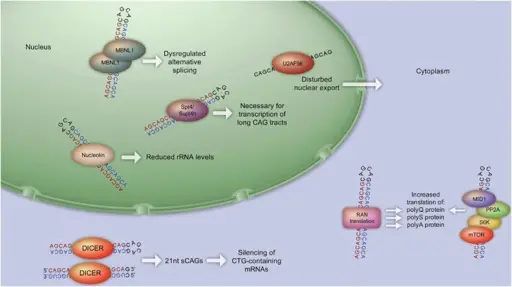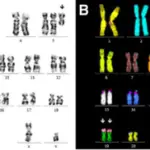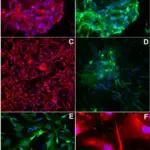
Neurotoxic mechanisms of CAG repeat mRNA. These include nuclear events like sequestration of the MBNL1 protein, which result in misregulated alternative splicing or the sequestration of other proteins like nucleolin, resulting in reduced rRNA levels. With increasing lengths of the CAG repeat, nuclear export becomes inhibited. In the cytosol, there is a Dicer-dependent production of sCAGs from either CAG repeat hairpins or from dimers of the CAG sense–CUG antisense transcripts. These sCAGs have the potential to silence CTG repeat-containing mRNAs. In addition, translational misregulation of polyCAG mRNAs occurs, including RAN translation of polyQ, polyA and polyS proteins from the CAG repeat mRNA molecule, as well as the increased translation of expanded CAG repeat mRNAs via the MID1 protein complex. Mechanisms of RNA-induced toxicity in CAG repeat disorders. Nalavade R, Griesche N, Ryan DP, Hildebrand S, Krauss S - Cell death & disease (2013). Not Altered. CC.
Trinucleotide-repeat disorders are disorders caused by trinucleotide repeat expansion.
Examples of trinucleotide-repeat disorders include:
- Fragile X syndrome
- Fragile X tremor ataxia
- Hunington’s disease
- Myotonic dystrophy
- Spinobulbar muscular atrophy
- Spinocerebellar ataxia
- Dentatorubral-pallidoluysian atrophy



